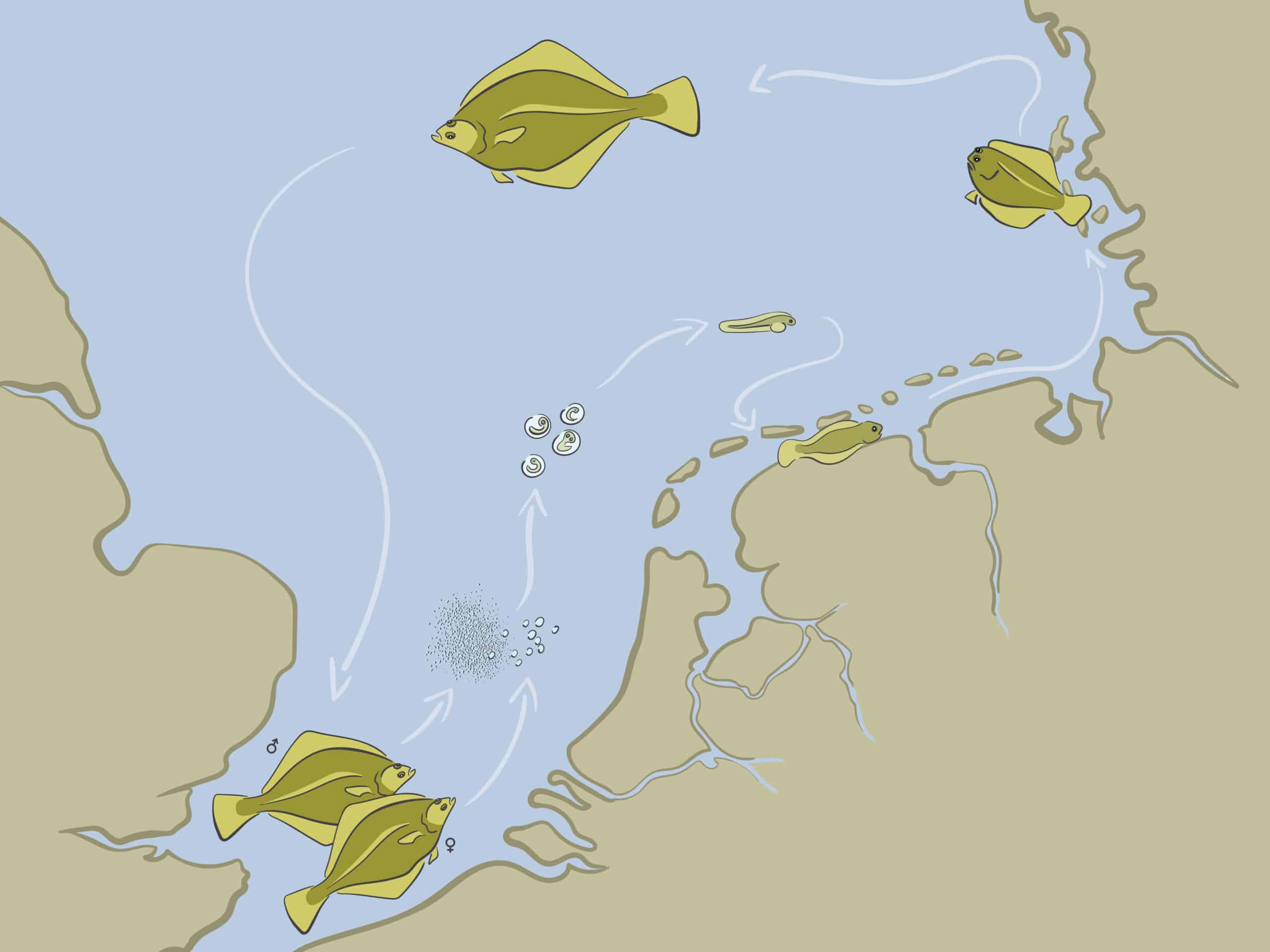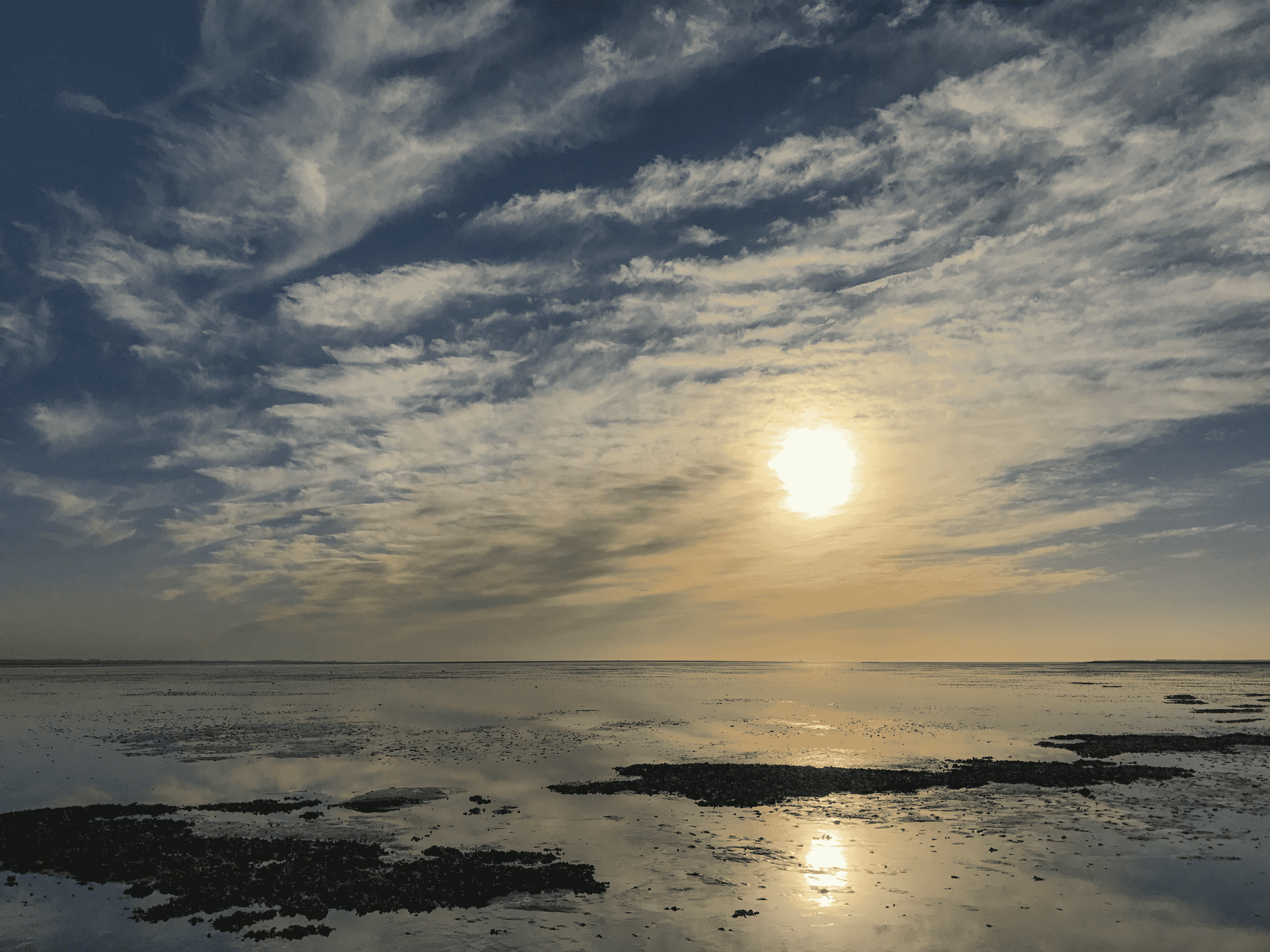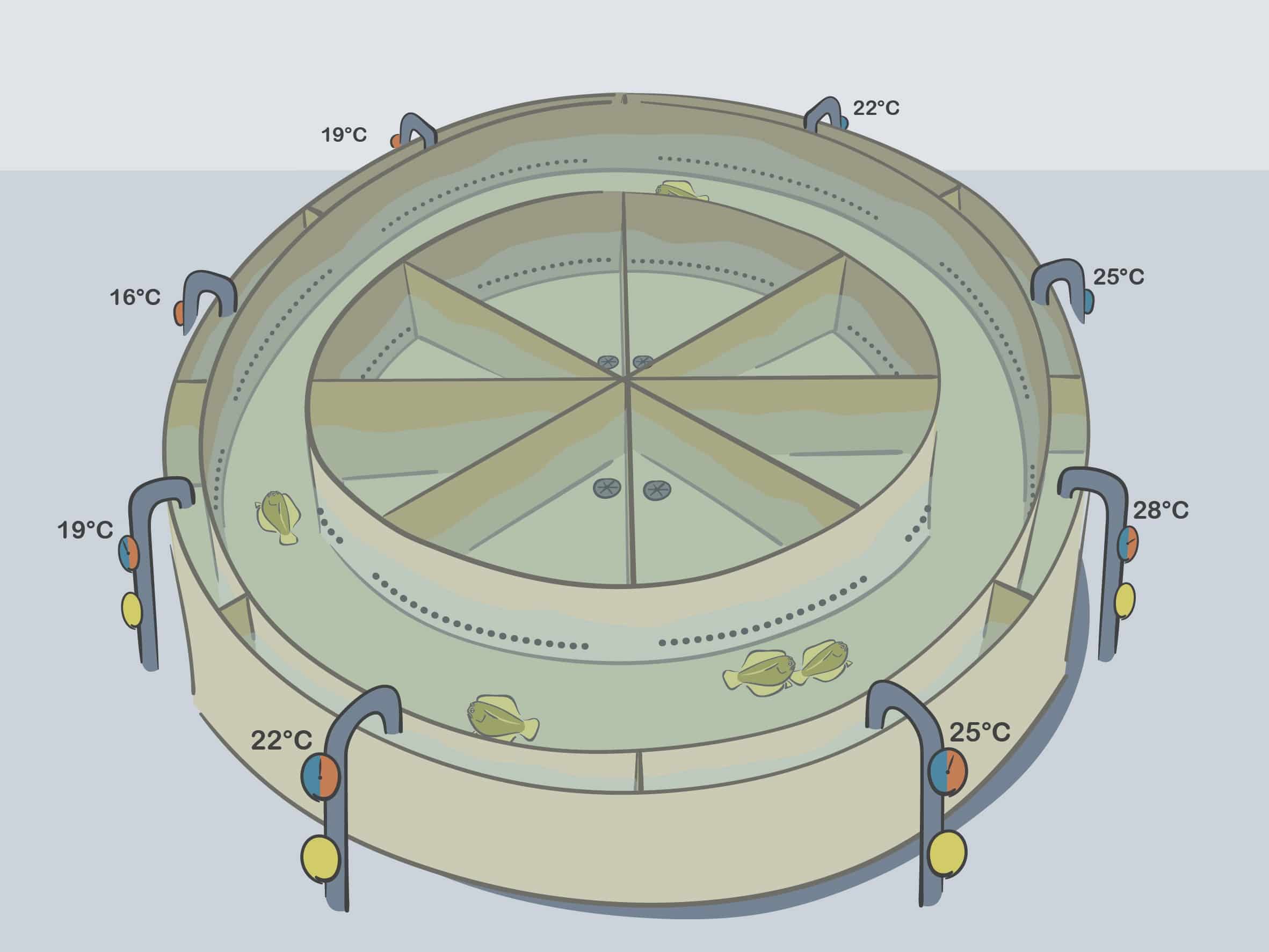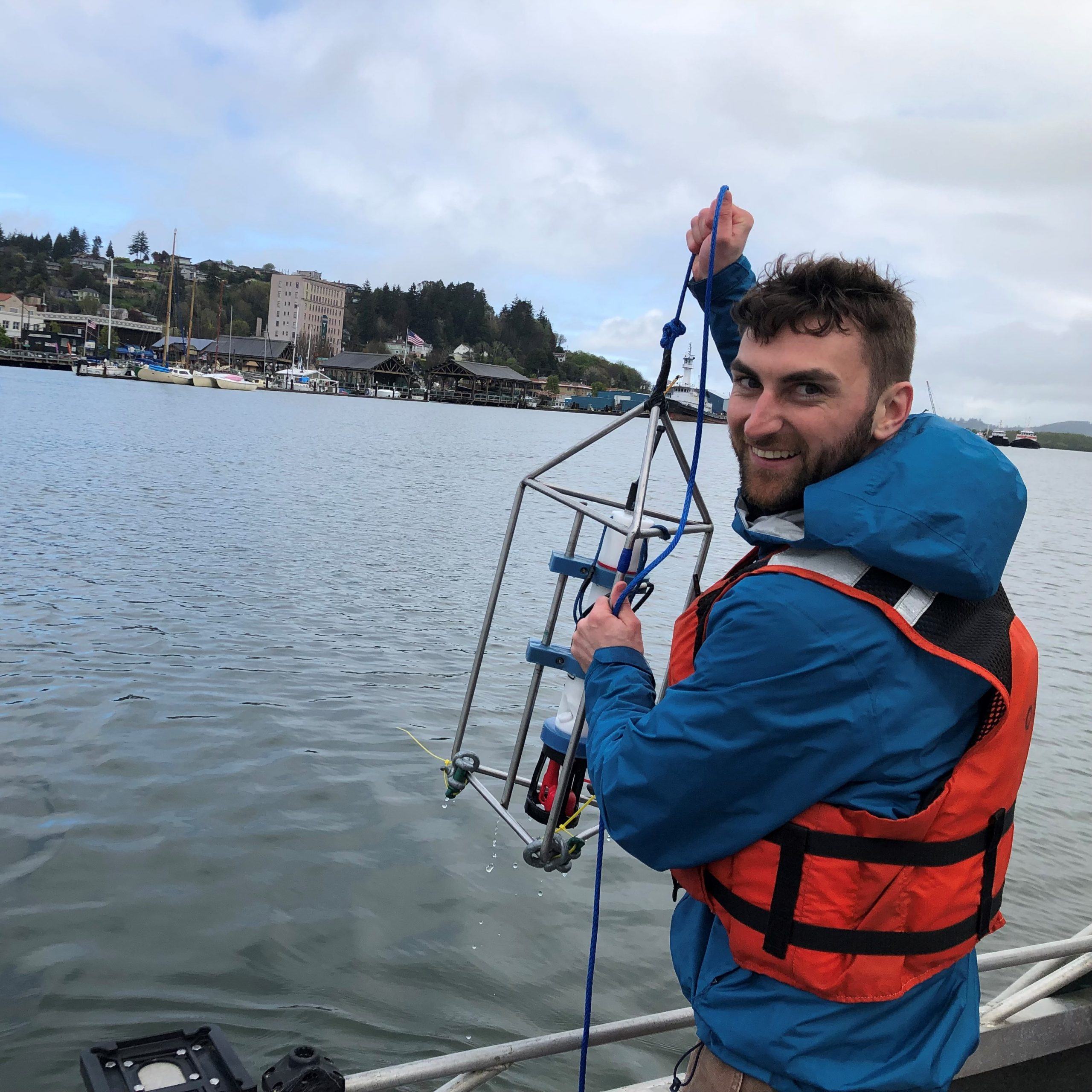WHAT ARE THE FUTURE PROSPECTS FOR FISH IN THE WADDEN SEA?
The results of the research done in the other sub-projects provide new insights into the function of the Wadden Sea for the fish species studied. In this way, we gain a better understanding of how the current management of the Wadden Sea contributes to the importance of the area for the various fish species in different life stages. The focus of the Integration part within the Swimway project is aggregating this new information. The main aim is to be able to determine which processes and habitats represent the most critical bottlenecks for fish in the Wadden Sea, for example those that have an effect on growth, food intake, reproduction or survival.

The various studies yield more insight into the role of the Wadden Sea in the life cycle of fish. This knowledge forms the basis of a model that can predict the impact of measures on fish.
Autonomous developments
Many changes in environmental factors, such as changing sea water temperature and salinity, are developments that cannot be influenced by local management measures. They do, however, have a major influence on the physiology of fish and on the food supply. They determine how well fish can grow or survive and reproduce. The physiological needs and the balance between energy requirements and supply differ between species and are different for juvenile and adult fish. In order to include the effects of these factors in the integration, we carry out experiments and theoretical analyses that specifically identify the effects of environmental factors on fish and their importance in life-cycle bottlenecks. Ultimately, this project component will show which factors are limiting for growth and survival at the various life stages.
Future scenarios
This information will be used to develop a model for analysing the specific contribution of (new) management measures to the fish stocks of the Wadden Sea. The processes used in population models, such as growth, mortality and reproduction, are controlled by environmental factors that can vary greatly: for example, temperature, food or the presence of a certain habitat. The key to understanding why a species is performing well or badly therefore lies in understanding these mutual processes and thus also the effect of the environment on them.
By investigating the environmental requirements of different species and comparing these with current or expected conditions in the Wadden Sea, targeted measures can be taken to improve fish stocks. If that is not possible for a particular species (because conditions are developing in such a manner that the species can physiologically no longer live there), the expected development in the fish fauna composition can be sketched under different future scenarios.
HOW ARE WE GOING TO INVESTIGATE THIS?
Experiments
To study the effect of different abiotic conditions on survival and growth, experiments will be carried out in which juvenile fish are exposed to a variety of conditions such as different temperatures and salinity levels. This way, the fish are given the opportunity to find their own preferred conditions and to show their limits in terms of environmental factors. For this purpose, fish species are used that represent a certain fish guild, for example marine juveniles, which use the area mainly for growing up.
The information gathered about the desired environment for different fish species and life stages will then be linked to spatial models that describe where and when these conditions occur or may occur under future climate scenarios.
Analysis
Once developed, the model will analyse the dynamics and scenarios contributing to the impact of measures at the population level, within which the different life stages per fish guild are represented. For example, within some fish guilds, such as the nursery stock species, the adults mainly live outside the Wadden Sea. It is feasible that the life stage outside the Wadden Sea is the most critical life stage for the population. By including all life stages in the model, it becomes clear whether bottlenecks are present, where they are, and whether measures within the Wadden Sea will be able to solve a potential problem in the fish population. If we know about the weakest link in the life cycle, we can tailor measures to deal with it.


Who
Research institute: Royal Netherlands Institute for Sea Research, Wageningen Marine Research, University of Groningen
PhD Researcher: Bass Dye (PhD student) and a postdoc





